Featured Articles
Martinez-Barker: A Night at the Office Gets Complicated…HAUSER
In many sports today, the great athletes are getting younger. In boxing, the other end of the age spectrum is being extended. Sergio Martinez is 36 years old. In a sport with multiple phony beltholders, he’s the real middleweight champion of the world.
On October 1st, Martinez defended his championship against Darren Barker in Atlantic City. Sergio was a 20-to-1 betting favorite. The prevailing view was that it would be just another night’s work. Then things got complicated.
Martinez won “Fighter of the Year” honors in 2010 by virtue of victories over Kelly Pavlik and Paul Williams. He began 2011 by knocking out Sergei Dzinziruk in impressive fashion.
But too often in boxing, the right connections matter more than ring performance. The supersized purses continued to elude Martinez. He was placed on a back-burner by HBO. In May of this year, he was approached by third parties who told him that he would be better off without his adviser Sampson Lewkowicz and promoter Lou DiBella. The lobbing peaked in early June, when Sergio was in Los Angeles for the June 4th match-up between Julio Cesar Chavez Jr and Sebastian Zbik. It was suggested to Martinez that he could get a $2,000,000 sighing bonus if he signed with another promoter. Other inducements were offered.
The maneuvering troubled Martinez, who has a strong sense of loyalty to Lewkowicz and felt that DiBella had done a credible job on his behalf. It also raised issues of tortious interference with contract, since Sergio’s promotional agreement with DiBella extended until February 12, 2012.
On June 14th, Martinez put the matter to rest, signing a six-fight contract extension with Lewkowicz and DiBella. Then, with no big-money opponent in sight, he signed to fight Darren Barker.
Barker, age 29, is a likable man with little pretense about him. He hails from London and was advertised as the “undefeated British Commonwealth and European middleweight champion.” His nickname is “Dazzling Darren” and he came into the bout with a 23-0 record against opposition of questionable provenance. To the American public, he was a fungible challenger.
Barker said all the right things during the build-up to October 1st: “If the fight was a formality and the favorite always won, boxing wouldn’t be much of a sport, would it? . . . As much as I respect Sergio, I believe I have what it takes to pull a massive upset . . . He’s underestimating me. If he wants to do that, fine. I’ll make him pay for taking me lightly and looking past what’s right in front of him . . . There’s not many things in life that I’m good at, but boxing is one of them.”
In recent years, the United Kingdom has produced champions like Lennox Lewis, Joe Calzaghe, and Ricky Hatton. It has also produced challengers like Michael Jennings and Gary Lockett. The prevailing view was that Barker fit into the latter category and didn’t pose much of a threat to Martinez.
Sergio gave his opponent the respect that he was entitled to as an undefeated professional fighter. “When I came to the United States,” the champion offered, “nobody knew me and people thought I was nothing as a fighter. I had to prove myself the same way that Barker wants to prove himself now.”
Still, the feeling at the final pre-fight press conference three days before the fight was that Barker couldn’t win without help from Martinez. In that vein, it was noted that the champion had a deep bruise beneath his left eye, courtesy of a punch thrown by sparring partner Israel Duffus.
And there was another potential problem. More on that later.
On fight night, Martinez entered dressing room 119 at Boardwalk Hall shortly after 8:00 PM. The first televised fight of the evening (Andy Lee vs. Brian Vera) was scheduled to start at 10:10. The earliest that Sergio would be called to the ring was 10:20. An eleven o’clock starting time was more likely.
Martinez sat on a folding metal chair with his feet propped up on another chair in front of him. Sanctioning body officials and HBO personnel moved in and out of the room. He had a smile and gracious word for each of them.
At 8:30, the room emptied out as most of Team Martinez left to watch a preliminary bout between heavyweights Magomed Abdusalamov and Kevin Burnett. Abdusalamov, a Martinez stablemate, was 9-and-0 with nine knockouts. Burnett, once considered a prospect, had lost three fights in a row and been reduced to opponent status.
Sergio and three others were now the only people in the room. There was relaxed conversation. Word filtered back that Abdusalamov had won on a first-round knockout. Team Martinez returned from ringside: Sampson Lewkowicz, trainer Pablo Sarmiento, cutman Dr. Roger Anderson, and cornermen Cicilio Flores and Russ Anber.
The mood in the dressing room was light. Heavy metal music played at low volume in the background. By nine o’clock, Sergio had been sitting for an hour, no more active than if he’d been at home watching a ballgame on television.
Anber began wrapping Martinez’s hands, left hand first. Sergio sipped from a cup of Starbucks coffee that he held in his right hand. Sometimes in the dressing room before a fight, he eats nuts and dried fruit. A can of mixed nuts was within reach, but he ignored it.
Anber finished wrapping the left hand, and Martinez nodded in satisfaction.
“Excellent or fucking excellent,” the cornerman queried.
Sergio smiled. “Fucking bueno.”
At 9:30, the right hand was done. Martinez took off his sneakers and put on his boxing shoes. Sarmiento moved a chair beside him and they engaged in quiet conversation.
The preparation continued. Sergio shadow-boxed in the center of the room for several minutes. Then he lay down on a rubdown table in the adjacent shower area. Flores stretched his legs and massaged his upper body for five minutes.
More shadow-boxing.
The HBO telecast began.
Martinez put on his protective cup and trunks. Anber gloved him up. From now until the fight was over, Sergio would unable to tighten his shoe laces, go to the bathroom, or even help himself to a drink of water. The only thing he’d be able to do with his hands was fight.
More stretching exercises.
At 10:20, with Lee vs. Vera in round three, Martinez began hitting the pads with Sarmiento; his first strenuous exercise of the evening.
During the last week of training camp, Sergio had strained a muscle in his left leg. Now, he appeared to be favoring the leg. It wasn’t a debilitating condition. But it was the sort of thing that could shade matters a bit. The straight left hand and overhand left are Martinez’s power punches. If he had trouble planting and pushing off his left foot, those punches would have less power than is normally the case. If the condition worsened during the fight, his timing might be affected.
The padwork ended. Martinez sat down. Flores draped a white towel over the fighter’s head and another across his chest. Roger Anderson put Vaseline on his face.
More padwork.
Flores helped Sergio into his robe. There was nothing to do now but pace back and forth and wait. A heavily-favored champion going to the ring is like a police officer responding to a 911 call that a man with a gun is running down the street. No matter how careful and well-prepared the cop is, something bad might happen.
There were some vocal Barker fans in the arena, but the crowd of 4,376 was largely pro-Martinez.
The first round was quiet and belonged to Sergio on the basis of a ten-to-five edge in punches landed. But it was a good round for the challenger in that it raised his confidence level a bit. Round two was more of a same. Then the momentum shifted.
If a fighter isn’t right in the ring, he’s the first person to know. Then his opponent figures it out.
Martinez’s modus operendi is to stand just outside of punching range with his hands down. As the opponent readies to punch, Sergio moves in and gets off first. More than most boxers, he fights with his legs. And he lures opponents into his power. Fighting aggressively against him opens a boxer up to counterpunches.
With that in mind, Barker moved cautiously forward for most of the fight, hands held high in a defensive posture. But in round three, he started jabbing more effectively and became more aggressive, landing several lead right hands. Martinez’s nose seemed to bother him. It bled from round four on and looked to be broken.
Sergio regained the initiative in round five. He also won six and seven, fighting the way he often fights; hands down, drawing Barker into punching range before getting off first. But his timing was off. He appeared to be lunging with his punches rather than moving with the fluidity and grace that characterize his art. And the blood in his nose was affecting his breathing.
Twenty-two seconds into round eight, Martinez’s right heel got entangled with the instep of Barker’s left foot and Sergio fell hard to the canvas. Referee Eddie Cotton correctly ruled it a slip. Sergio rose slowly and his corner held its collective breath as he tested his left leg.
Then Barker came on again, doing damage in rounds eight and nine. The challenger was fighting as well as he could. With more power, he might have been able to turn the fight. But he was a heavy underdog for a reason.
Round ten was the biggest round of the fight for Martinez. Halfway through it, he landed a sharp straight left that shook Barker and had him holding on. Forty seconds later, a solid jab landed just right and staggered the challenger. Darren covered up, and, over the next twenty seconds, Sergio fired a barrage of thirty-three unanswered punches before Barker fired back.
The champion came out confidently in round eleven. Barker was weary; his left eye was closing. Now Sergio was measuring his opponent. Seventy-seven seconds into the stanza, a right hook landed partially on Barker’s upraised left glove and partially just above his ear. The challenger went down, struggled to rise, and was counted out.
“I can’t remember the punch,” Barker acknowledged afterward. “I remember, my legs just fell from under me. I was trying to get up, but couldn’t.”
The judges had Martinez ahead 99-91, 97-94, and 96-94 at the time of the stoppage. This writer scored it 96-94, giving Barker the third, fourth, eighth, and ninth rounds.
In truth, Martinez looked flat. After a number of scintillating outings, his performance was less-than-spectacular, more workmanlike than inspired. But he did what a champion is supposed to do, digging deep and gutting it out to win on a night when he was less than his best.
“I must be realistic,” Sergio said at the post-fight press conference. “It was a tough fight and a close fight.” He paused, then added, “It is never an easy fight. There is never a small enemy in the ring.”
As for what comes next; Martinez symbolizes the conundrum that boxing finds itself in today. Boxing fans know how good he is. The rest of the world has no idea who he is; let alone, how good.
Sergio can compete in two weight divisions without sacrificing speed or power. He’s a “small” middleweight, who could go down to 154 pounds with relative ease. As DiBella points out, “He weighed in for Barker at 158 after eating all week like Gary Shaw.” But the fighters with names that generate big money don’t want to get in the ring with him.
Martinez is beatable. Before fighting Barker, he’d faced moments of doubt in each of his five previous fights. At times, Kelly Pavlik, Sergei Dzinziruk, Kermit Cintron, and Paul Williams (twice) fought with him on even terms. But he’s a gifted athlete with a fighting heart. And he can punch. In his last three outings, he has knocked out three opponents with a composite record of 99-and-1.
In sum, Martinez is a symbol of excellence in boxing. “I don’t know how many more fights I’ll have,” he told Gabriel Montoya recently. “But I know I can fight for more. I’m going to continue to work until my body says no more.”
Sergio will be 37 years old in February. He doesn’t have that much time left. Boxing fans should get to know him better before he’s gone.
Thomas Hauser can be reached by email at thauser@rcn.com. His most recent book (Winks and Daggers: An Inside Look at Another Year in Boxing) has just been published by the University of Arkansas Press.
-

 Featured Articles3 weeks ago
Featured Articles3 weeks agoAvila Perspective, Chap. 330: Matchroom in New York plus the Latest on Canelo-Crawford
-
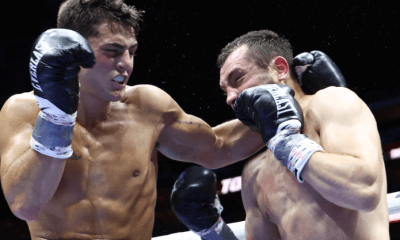
 Featured Articles1 week ago
Featured Articles1 week agoVito Mielnicki Jr Whitewashes Kamil Gardzielik Before the Home Folks in Newark
-
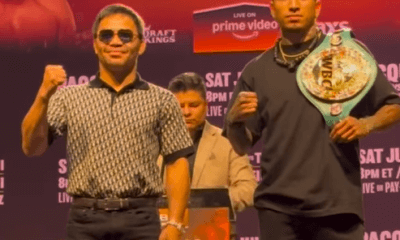
 Featured Articles4 weeks ago
Featured Articles4 weeks agoAvila Perspective, Chap 329: Pacquiao is Back, Fabio in England and More
-
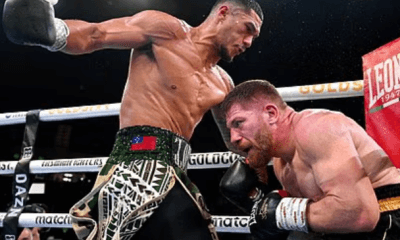
 Featured Articles3 weeks ago
Featured Articles3 weeks agoOpetaia and Nakatani Crush Overmatched Foes, Capping Off a Wild Boxing Weekend
-
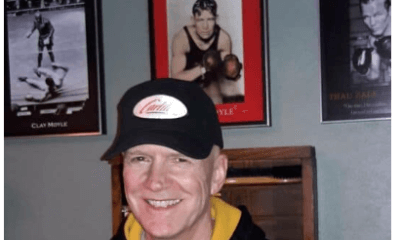
 Featured Articles2 weeks ago
Featured Articles2 weeks agoCatching Up with Clay Moyle Who Talks About His Massive Collection of Boxing Books
-

 Featured Articles3 weeks ago
Featured Articles3 weeks agoFabio Wardley Comes from Behind to KO Justis Huni
-
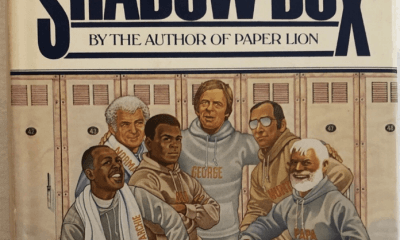
 Featured Articles4 weeks ago
Featured Articles4 weeks agoDelving into ‘Hoopla’ with Notes on Books by George Plimpton and Joyce Carol Oates
-
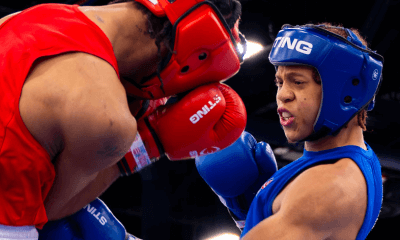
 Featured Articles1 week ago
Featured Articles1 week agoMore Medals for Hawaii’s Patricio Family at the USA Boxing Summer Festival















